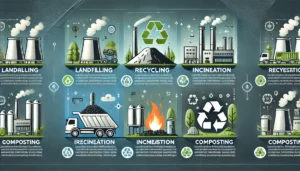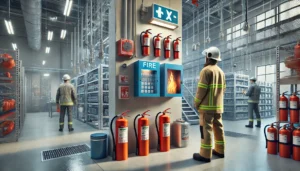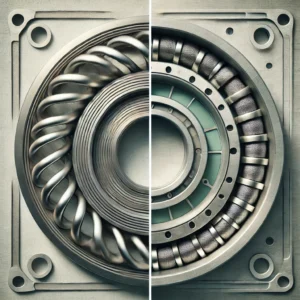Inspecting and testing of pipe fittings are vital in determining whether they are durable , safe and comply with various industry standards. These processes ensure the fittings satisfy the standards and codes with respect to mechanical, chemical and performance characteristics. Regular evaluations such as hydrostatic testing and metallurgical testings ensure safe and reliable use of pipe fittings in the industrial context.
Hydrotest for Pipe Fittings
As far as possible the hydrostatic test is not a requirement for testing pipe fittings unless directed by the buyer. It is however a standard feature that many buyers require fittings to be made from hydro-tested pipes so as to guarantee the structure. The code in force requires that the fittings be able to withstand the pressure that it is meant to work with. In determining the design features, a proof test or a burst test is often employed, whereby a pipe spool that has a fitting welded to it is subjected to a specific burst pressure. If this test is successful, the design ready for mass production of similar products. Stubs for lap joint flanges do not need to undergo hydrostatic testing since they are encased in flanges designed for a particular pressure-temperature rating.
Non-Destructive Testing (NDT)
Picture this: malignant destruction or degradation of the surface remains undestroyed whilst piping constituents are being analyzed. With this particular context in mind, there is a specific set of procedures known as the non-destructive tests (NDT). Ultrasonic Test (UT) is employed for examination of flaws that can’t be seen by the naked eye, whereas Radiography (RT) checks the seams of welds for any flaws that can be detected. Magnetic Particle Testing (MPI) and Liquid Penetrant Testing (LPT) are used for examining flaws that are relatively closer to the surface of the material. Positive Material Identification (PMI) is done for the purpose of verifying what the material is and ensuring that the material criteria is met. Combining these approaches ensures that the fittings are able to conform to specific requirements in quality.
Destructive Testing
In order to push pipe fittings to their limits, it is important to test the tensile strength, toughness, and durability of the fittings. The tensile test is designed to assess the load a particular fit can bear before it fractures, while the impact test (Charpy V-Notch) measures material resistance to harsh impact at subzero temperatures. Hardness test precisely measures the depth of penetration into a material or wearing of the material, and also, bending tests check the integrity of welds and the degree to which the fitting can bend without fracturing. This information is important in determining the mechanical characteristics of pipe fittings.
Metallurgical Tests
Metallurgical tests involve examining the microstructure of base materials and welds to determine whether the tested materials meet industry requirements. Micro analysis relates to the chemical composition of raw materials, products as well as welds while macro analysis relates to the amount and to the quality of the weld fusion. Other tests like Intergranular Corrosion (IGC) tests, ensure that stainless steel fittings do not suffer from any grain boundary corrosion. Ferrite Testing is also done on stainless steel to determine the amount of ferrite content to achieve satisfactory mechanical properties. In the presence of hydrogen induced failures, there are tests for the material’s resistance for example HIC (Hydrogen Induced Cracking) and SSC (Sulfide Stress Cracking).
Visual Inspection
A thorough formality in finding surface irregularities or other defects arising in the course of manufacture relies on visual inspection. Inspectors look at the fittings for dents, porosity, die marks, and undercuts subjects the contraction to the internal defects of weld, uneven weld beads, porosity as well as lack of weld fusion. The acceptance criteria set out in the applicable standards for the fittings must be fulfilled so that surface quality and general appearance of the products do not go below the factors that normally affect the growth of the industry.
Pipe Fitting Identification
Identification is key in ensuring the traceability of pipe fittings. Every fitting would include such essential information as the manufacturer’s logo, ASTM material code, grade of material, size specifications, wall thickness/schedule number, and a heat number for future reference. Furthermore, markings for compliance such as and “WP” standard fittings or “S58” special fittings must also bear distinct markings so that specifications are met.
Added Requirement in Test for Corrosive Environment Applications
For applications whose environments are corrosive, further tests are necessary. Grain size analysis, particularly for alloy steel (AS) and stainless steel (SS), ensures that the material’s microstructure conforms. Hydrogen Induced Cracking (HIC) test, resistance to hydrogen damage is confirmed while Sulphide Stress Cracking(SSC) ensure the material is not unsuitable for sour service. The tests mentioned standardised the performance of fittings in more extreme conditions.
Final comment
The inspection of pipe fittings is a thorough process which consists of numerous testing methods combined with observations to determine the level of standards achieved with respect to safety and performance capabilities. Every step of the process from non-destructive testing, bridge imaging, or a metallurgical analysis keeps control of the asset to ensure more reliability for the intended use of pipe fittings.
Induskart offers pipe fittings that are thoroughly checked and tested to conform to the highest quality control standards. From high-pressure pipeline to corrosive environments, our fittings are guaranteed to be reliable and safe for use in the most demanding applications.










